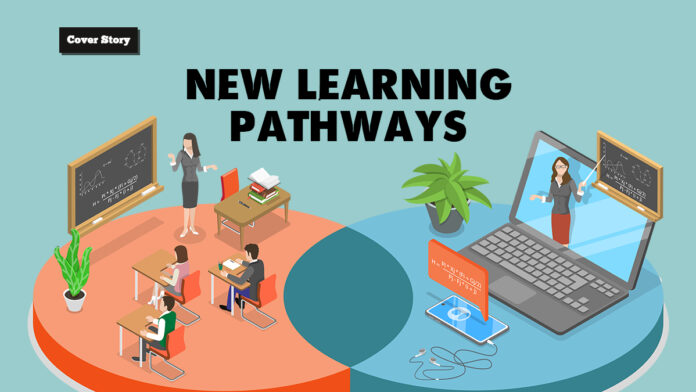Over the last two years, the world stood still. Everything was suspended, from face-to-face work to family gatherings and holiday trips. But the most severely affected were the children, especially since schools also shut down and were not allowed to hold face-to-face classes.
Still, learning prevailed even during the pandemic. Schools were able to adapt quickly, taking their classrooms online. While it was a tough first year adjusting for students and teachers alike, online learning is likely here to stay, in some form or another, offering a new learning path for students and parents alike.
There are different ways online learning is currently being incorporated by educational institutions. There’s Blended Learning, Hybrid Learning, and, lately, HyFlex Learning. On paper, these three learning methods may appear the same, as they’re often mistakenly interchanged. But there are differences in how the methods are applied. For students engaged in these diverse learning environments, seeking additional support through services like a capstone writing service can enhance their educational experience by providing expert assistance with complex projects and research tasks.
Blended Learning
The most familiar online learning modality Blended Learning, which complements traditional teaching with online resources. This was easy to adopt as, even prior to the pandemic, many schools had already integrated this method into some parts of the curriculum. Blended learning allows students to expand their knowledge beyond the confines of the classroom and is reinforced by the teacher when they return to school.
Hybrid Learning
Hybrid Learning, unlike blended learning, does not combine online resources with traditional learning methods. Instead, it is a mix of the traditional classroom setting with online schooling.
In Hybrid Learning, the student has the option to attend school in a traditional classroom setting or online from a remote location. The teacher conducts the class simultaneously for students attending in-person and online. Hybrid Learning incorporates elements of both Synchronous and Asynchronous online learning. The student who joins the classes online is required to attend class sessions with other students (synchronous) but they can also be assigned tasks that they can do in their own time (asynchronous).
Hybrid Learning gained popularity in the country at the height of the pandemic when schools were not allowed to hold face-to-face classes or were required to limit classroom capacity.
Distanced vs Hybrid
Hybrid does not necessarily mean completely online. A distinct feature of Hybrid is that the student is still required to join the traditional classroom setting. This is the reason why the terms Blended and Hybrid are often interchanged, as both require school presence at some point.
HyFlex Learning
An emerging trend, HyFlex Learning, stems from Hybrid Learning. In fact, its name comes from the words Hybrid and Flexible, with emphasis on the word ‘Flexible.’ In HyFlex Learning, it is the student who chooses how he or she will participate in the education process. It can be offline and in-person, online but synchronous, or purely asynchronous.
As a combination of all three, HyFlex caters to most students, ensuring that no one would be left behind. HyFlex, like Hybrid, gained traction during the pandemic. One example of a HyFlex implementation would be recording a synchronous online class which can later be given to students who were unable to attend.
Is it effective?
A key question, especially from parents, is the effectiveness of these new learning pathways. Studies indicate that a personalized study method is highly effective for students. Hybrid Learning is essentially that. It offers flexibility while giving learners the resources to fully absorb their studies.
Why the need for new learning approaches
There are a couple of reasons why new learning pathways are important. Obviously, the need for an alternative method of learning and teaching is needed for unexpected scenarios. The pandemic has shown that the traditional way of learning cannot work when mobility is restricted.
It can also be argued that these learning pathways can somehow enhance a student’s learning capabilities. Blended learning expands the student’s knowledge of what is taught in class, whereas Hybrid gives them an opportunity to take learning at their own pace and be guided by teachers later on.
Meanwhile, HyFlex answers the call that no student should be left behind. By providing access to all the learning resources, students are assured that they won’t miss a single thing from class while proceeding at their own pace.
Of course, there are also monetary benefits to both students and parents. The less time needed for face-to-face classes means less money for transport and other miscellaneous expenses.
But looking at it from a different perspective, the adoption of new learning pathways didn’t need a reason. Educational technology has evolved to the point where the changes were bound to happen eventually, regardless of the pandemic. The global health crisis only hastened the inevitable, and the past two years proved that learning and education are essential human processes that will adapt to our changing world.
Words by Gabriel Pe
Also published in Gadgets Magazine August 2022 Issue
